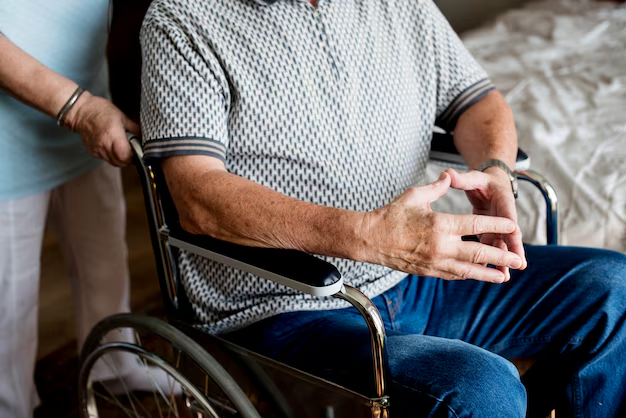Uncovering the Early Signs of Parkinson’s Disease: What You Need to Know
Parkinson’s disease is a progressive neurological disorder that affects millions of people around the globe. While it is more common among older adults, it can occur in younger individuals too. Recognizing the early signs can help in managing the disease more effectively, potentially slowing progression and improving quality of life. Here, we explore the first symptoms of Parkinson's disease, their implications, and what they might mean for you or a loved one.
Understanding Parkinson’s: The Basics
Before diving into the specific symptoms, it’s important to understand what Parkinson’s disease is. Characterized primarily by tremors, stiffness, slow movement, and balance difficulties, Parkinson’s stems from a loss of dopamine-producing neurons in a part of the brain called the substantia nigra. Dopamine is a neurotransmitter crucial for coordinating movement, and its deficiency leads to the hallmark symptoms of Parkinson’s.
The Common Early Symptoms of Parkinson’s
1. Tremors
The most notable and often first sign of Parkinson’s is a tremor or shaking. This usually begins in one hand or one side of the body when at rest. Known as a "pill-rolling tremor," it can be subtle initially and might be mistaken for fatigue or stress.
2. Slowness of Movement (Bradykinesia)
Another early symptom is bradykinesia or slowness in initiating and executing movements. This can manifest as difficulty in completing simple tasks like buttoning a shirt or writing, and may contribute to smaller handwriting or a change in the usual writing style known as micrographia.
3. Muscle Rigidity
Muscle stiffness often occurs in the limbs or neck, leading to discomfort and soreness. Unlike normal muscle stiffness after exercise, this rigidity is persistent and can contribute to a reduced range of motion.
4. Postural Instability
Early-stage Parkinson’s can cause balance issues and a stooped posture. You might notice yourself leaning forward when walking or feeling unsteady on your feet, increasing the risk of falls.
5. Changes in Speech and Expression
A softer, low-volume voice, known as hypophonia, can emerge early. Alongside this, you may experience a reduced range of facial expressions or a 'mask-like' face, which is a condition called hypomimia.
Peripheral Symptoms Not to Ignore
1. Sleep Disturbances
Many people with Parkinson’s report changes in their sleep patterns. These can include REM sleep behavior disorder, where one acts out dreams, or insomnia and excessive daytime sleepiness.
2. Olfactory Issues
Loss of smell (anosmia) is another symptom that often predates the classical motor symptoms of Parkinson’s. Though it can result from various causes, its presence alongside other symptoms should be noted.
3. Constipation
Digestive difficulties, particularly constipation, can be an early warning sign of Parkinson’s. While it might seem unrelated to a neurological disorder, the slow digestive system is indeed a common issue in Parkinson’s patients.
Why Early Detection Matters
Identifying Parkinson’s disease in its nascent stages allows you and your healthcare provider to adopt measures that may slow its progression. While there’s no cure, various treatments—from medications to lifestyle adjustments—can significantly improve the quality of life.
Navigating Life with Parkinson’s
1. Medical Treatment Options
- Medications: Most notably, Levodopa helps replenish dopamine levels in the brain.
- Therapies: Physical therapy can assist in maintaining flexibility, strength, and balance.
2. Lifestyle Adjustments
- Diet: A balanced diet rich in antioxidants might support brain health.
- Exercise: Regular physical activity can improve mobility and mental well-being.
3. Support Networks
Joining a support group provides a community of individuals who share similar experiences, offering emotional and practical support. This connection can be invaluable for both the individual with Parkinson’s and their caregivers.
4. Mental Health
Dealing with a chronic condition can affect mental health. Therapies like cognitive behavioral therapy (CBT) can help manage any associated anxiety or depression.
Myths and Misconceptions
Parkinson’s Does Not Equal Tremors: While tremors are common, not everyone with Parkinson’s experiences them. Some might have stiffness or balance issues without trembling.
It’s Not Just an 'Old Person's Disease': Early-onset Parkinson’s can occur in individuals under 50, highlighting the need for awareness across all age groups.
Progression Varies Widely: The rate and severity of Parkinson’s symptoms differ from person to person. Some might experience rapid changes, while others progress slowly over decades.
Engaging with Your Healthcare Provider
Having a transparent relationship with your healthcare provider is crucial in managing Parkinson’s. Here are questions you might consider discussing:
- What treatment options are most suitable for my condition?
- Are there clinical trials available that I can participate in?
- Can lifestyle changes make a significant impact, and what should I focus on?
Understanding what early symptoms to watch for is vital in managing Parkinson’s. With no definitive test for the disease, tracking symptoms over time and engaging with healthcare professionals can lead to a timely diagnosis and proactive management.
Key Takeaways:
- 👀 Notice Subtle Changes: Look out for small changes like tremors, stiffness, and changes in handwriting.
- 🧠 Understand Peripheral Symptoms: Smell loss, sleep disturbances, and constipation can also be early indicators.
- 🏃♂️ Stay Active: Regular exercise and a healthy diet may help manage symptoms.
- 👫 Build Support Systems: Engage with support groups and mental health resources for comprehensive care.
- 🔍 Keep Vigilant: Be proactive in monitoring and seeking medical advice for any unusual changes.
By recognizing these symptoms, you empower yourself with the knowledge needed to tackle Parkinson’s proactively, ensuring that you or your loved one can maintain the best possible quality of life.

Related Articles
- Are There Environmental Causes Of Parkinsons
- Can Alcohol Cause Parkinson's
- Can Concussions Cause Parkinson's
- Can Females Get Parkinson Disease
- Can Head Trauma Cause Parkinson's
- Can Parkinson Disease Cause Dizziness
- Can Parkinson's Affect Eyesight
- Can Parkinson's Affect Memory
- Can Parkinson's Affect Speech
- Can Parkinson's Affect Vision